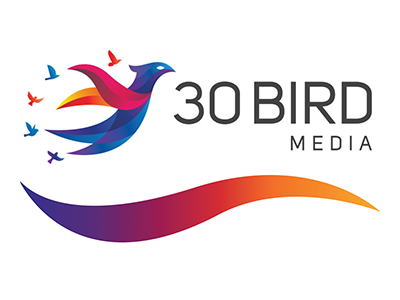 |
Managerial Leadership: Coping Through a Change Process (Instructor Guide) |
1.00 |
Whether your employees perceive change as positive or negative, you might encounter an emotional response from them. They will have many questions regarding their roles, competencies, and, possibly, even their futures. Your employees might feel they are being forced out of a comfort zone, and they might experience a loss of familiarity. Typical responses during a change include feelings of doubt, anxiety, fear, and anger. Sometimes, changes in the workplace can trigger a severe emotional response.
In this course you will learn to: respond to distress and reduce stress, and succeed through failure and deal with mistakes.
This Instructor's Edition of this course includes notes and suggestions to assist you in presenting the material, whether in an in-person classroom setting or as an instructor-led online or distance-learning course. It also provides you with the answers to questions found in mid-lesson activities, as well as in the quiz that concludes the course. |
 |
PMP® Certification: Passing the 2021 Exam - Exam Prep |
1.00 |
Exam Prep to accompany 30 Bird's PMP® Certification: Passing the 2021 Exam course. |
 |
Animal Behavior 4: Reliability and Validity |
1.00 |
This course will help ensure that the data you collect in animal behavior research is repeatable, consistent, and actually measures the features of a target behavior. This is called reliability and validity. |
 |
Coping with Crying (CDA 1 & 3) |
2.00 |
Babies cry to communicate. In fact, sometimes it's the only way babies can communicate. Coping with crying can be a challenge, especially for people who have little or no experience care for infants. Learning to cope with crying is critical, as infant crying is the number one trigger for shaking a baby. In this course, we will learn about Shaken Baby Syndrome, and about ways to cope with a crying infant. This course is designed to be part of a Child Development Associate (CDA) Credential™ curriculum. It covers CDA Subject Area 1, Planning a Safe and Healthy Environment and CDA Subject Area 3: Supporting Children's Social and Emotional Development. This course can also be taken as a stand-alone learning event, or as part of a broader early childhood education curriculum. |
 |
Sleep is Essential to Good Health (CDA 1) |
2.00 |
This course delves into the science behind sleep, revealing its essential role alongside nutrition and physical activity. Explore recent research highlighting the impact of sleep on hormone regulation, obesity risk, brain development, cognitive function, and behavior. Discover age-specific sleep requirements and gain practical tips and recommendations to nurture healthy sleep habits in children, setting them on the path to well-being and success. |
 |
Growth and Development of Infants and Toddlers (CDA 1) |
2.00 |
A family child care early learning program that supports the growth and development of infants and toddlers needs nurturing caregivers, a healthy and safe environment, good relationships between family and caregiver, and appropriate activities to offer good quality care. This takes planning and knowledge of the growth and development of infants and toddlers. Find ways to enhance your family child care environment and build quality relationships with the infants and toddlers in your care.
This course is designed to be part of a Child Development Associate (CDA) Credential™ curriculum. It covers CDA Subject Area 1, Planning a Safe and Healthy Environment. This course can also be taken as a stand-alone learning event, or as part of a broader early childhood education curriculum. |
 |
Food Safety Practices (CDA 1) |
2.00 |
Safeguarding young minds and bodies is paramount in child care, and food safety plays a crucial role. This course empowers both center and home-based practitioners with vital knowledge and skills to combat foodborne illness (FBI), prevent choking hazards, and minimize other food-related injuries. Discover comprehensive guidelines for implementing effective food safety practices, ensuring you cultivate a healthy and secure environment for every child entrusted to your care. |
 |
Reduce the Spread of Germs in Child Care Programs (CDA 1) |
2.00 |
Colds, stomach viruses, and ear infections top the list of common illnesses for young children. Young children in child care centers and homes tend to get these common illnesses more frequently than young children who are not in group care. In many child care settings, illness moves quickly from one child to another. This course examines how to reduce the spread of germs in child care programs and establish ways to keep young children and the adults who care for them healthy. This course is designed to be part of a Child Development Associate (CDA) Credential™ curriculum. It covers CDA Subject Area 1: Planning a Safe, Healthy Environment to Invite Learning. This course can also be taken as a stand-alone learning event, or as part of a broader early childhood education curriculum.
|
 |
Managerial Leadership: Motivating Employees Through Change (Instructor Guide) |
0.50 |
Your organization’s vision was created to inspire and unite the members of the organization as they work toward achieving common goals. Change can distract employees from the vision because going through the change process can be intensely personal and emotional. Remembering the vision and its purpose can keep your employees focused on their role in the company.
In this course you will learn to: motivate employees through a change and prepare for difficulty, and overcome resistance and resolve conflict.
This Instructor's Edition of this course includes notes and suggestions to assist you in presenting the material, whether in an in-person classroom setting or as an instructor-led online or distance-learning course. It also provides you with the answers to questions found in mid-lesson activities, as well as in the quiz that concludes the course. |
 |
Advanced Interpersonal Communication: Building Relationships Through Feedback (Instructor Guide) |
0.75 |
Providing feedback is an important element in building a relationship because it closes the circle of communication that links the listener and speaker. Until feedback is given, the people involved in communication are either speakers or listeners. Once a speaker receives feedback, the roles switch, and both parties are equally involved in a conversation.
In this course you will learn to use paraphrasing effectively, and provide positive and constructive feedback in a business setting.
This Instructor's Edition of this course includes notes and suggestions to assist you in presenting the material, whether in an in-person classroom setting or as an instructor-led online or distance-learning course. It also provides you with the answers to questions found in mid-lesson activities, as well as in the quiz that concludes the course. |











